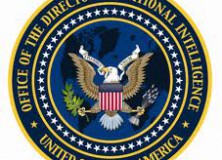Pre-9/11 Intelligence and the Creation of the Director of National Intelligence — Jessie Daniels

INTRODUCTION:
On September 11, 2001, the terrorist group Al-Qaeda carried out a series of coordinated suicide attacks on the United States, which resulted in the deaths of nearly 3,000 people. These attacks represented “an event of surpassing disproportion,” highlighting the inability of the U.S. intelligence agencies to identify and prevent terrorist acts on American soil. The bipartisan National Commission on Terrorist Attacks Upon the United States—also known as the 9/11 Commission—was established to investigate the attacks. It concludes that the intelligence community’s “most important failure was one of imagination,” noting there was “uncertainty” in the community, “as to whether this was just a new and especially venomous version of the ordinary threat the United States had lived with for decades, or it was indeed radically new.” The September 11, 2001 terrorist attacks spurred an effort to reform the U.S. intelligence system. To this end, the 9/11 Commission called for the creation of a Director of National Intelligence (DNI) with wide authorities to oversee the Intelligence Community (IC), replacing the Director of Central Intelligence (DCI) as the IC’s helm. While the position was codified into law under the Intelligence Reform and Terrorism Prevention Act (IRTPA) on December 17, 2004, it was granted more limited authority than originally envisioned by the commission.
STRATEGY:
Before 9/11, attempts to integrate the efforts of Intelligence Community under the DCI were ad hoc. After 9/11, however, the government began a fast-tracked effort to better coordinate intelligence by creating the position of DNI, as well as the National Counterterrorism Center (NCTC) to better centralize information. Implementation of this goal progressed despite pushback from agencies and some resistance in Congress. Since its creation, the DNI has supported several additional reforms to strengthen its position, but momentum for further intelligence restructuring appears to have stalled.
INTEGRATED ELEMENTS OF NATIONAL POWER:
Pre-9/11, intense interagency rivalry existed between the CIA and FBI. In addition, the Clinton administration’s effort to better coordinate the intelligence process created antagonism between the agencies and the White House and sometimes stifled information from getting to the right consumer due to rivalries. While the effort to create a DNI proceeded post-9/11, opposition from agencies in the IC and some legislators in Congress, as well as ambivalence from the White House, worked to weaken the authorities of the DNI in the final legislation. While this has hindered the DNI’s ability to end interagency rivalries, there have been key improvements to enhance information sharing.
EVALUATION:
Specifically, the weaknesses of the pre-9/11 IC were a lack of centralized authority, an absence of political will to reform the IC, and poor information sharing between agencies, as well as unchecked rivalries, in particualr between the FBI and CIA. The pressure exerted by the 9/11 Commission on the U.S. government to implement its recommendations helped spur reform, which resulted in the creation of the DNI. Since its creation, however, a number of variables, including continuing agency hostilities, myopic organizational cultures and information sharing problems, as well as increased bureaucracy, have complicated the development and implementation of the DNI strategy. The limited authority of the DNI, combined with the ambiguousness of its powers and increased bureaucracy have complicated the intelligence process. Plus, as the IC structure has become more centralized in response to past criticisms, the dangers of overcentralization have come to light, particularly the fear that the IC might put too much focus on a single risk.
RESULTS:
The failures prior to 9/11 culminated with a terrorist attack on the homeland that cost more than 3,000 American lives. Since the passage of the IRTPA in 2005, the effort to reform the Intelligence Community—and the role of the DNI in that effort—has made progress, but significant obstacles linger. Allowing these obstacles to remain increases the risk of another large-scale terrorist attack, given the importance of intelligence to counterterrorism efforts.
CONCLUSION:
The case of the failure of the IC to detect the impending terrorists attacks on America and the subsequent creation of the DNI illustrates a concerted attempt to centralize the nation’s intelligence structure after a massive failure. This attempt sought to rectify entrenched organizational rivalries that have been institutionalized in the IC since the 1947 National Security Act. This case illustrates the level of bureaucratic opposition many reforms face and the difficulty of avoiding past faults within new organizations. Consensus exists that the mere creation of the DNI, for a variety of reasons, has not in itself instigated the kind of intelligence reform needed to fully address the threats facing the United States.